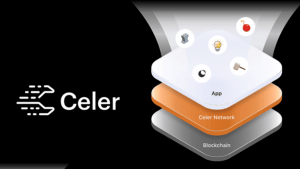DeFi Transactions Cost An Arm and a Leg — But Not For Long
Disclaimer: The Industry Talk section features insights by crypto industry players and is not a part of the editorial content of Cryptonews.com.

Transaction fees can cripple any cryptocurrency or blockchain network with ease. No one likes spending double-digit fees to move funds around or access specific products and services. For small users, gas fees are a problem, whereas whales don’t care too much. Finding a solution to these mounting gas fees is of the utmost importance.
The Current State Of Gas Fees
As most DeFi activity takes place on Ethereum, the network needs to provide acceptable transaction fees when users perform tasks. Sadly, that is far from the case today. Current gas fees range from $13.37 to $43.79, depending on which task one aims to complete. Using Uniswap and other decentralized exchanges to add or remove liquidity remains nearly three times as expensive as a traditional transfer.
Sustaining this level of costs is not beneficial to anyone. Regular users pay an arm and a leg to perform very basic tasks on a network projecting itself as the “next-generation blockchain”. Although the upcoming scaling improvements will help alleviate these costs, that doesn’t help people using Ethereum’s blockchain today.
In the cryptocurrency, the “whales” – who control vast amounts of crypto assets – are not too bothered by high fees. If they aim to buy or sell an asset, a $40 price tag will make very little difference. Big investors can afford to pay high gas fees and manipulate the broader network while doing so. Not only are they contributing to the gas fee issue, but they can also influence asset prices directly while normal users aren’t willing to place buy orders due to high transaction costs.
Addressing these concerns will require a very different approach to blockchain technology. Layer 2 solutions are gaining momentum due to their efficiency and speed improvements. If Defi, DApps, and other blockchain-based trends are to gain mainstream traction, high transaction fees need to be removed from the equation.
Who Has The Solution?
Although there are many Layer two projects on the market, Celer aims to provide a solution to all existing and future DeFi protocols. Executing transactions at a fraction of the cost will prove beneficial. With its advanced rollup technology, gas fees are split between multiple users in a non-custodial manner. It is merely an example of how efficient the network can be, introducing benefits to regular users and whales alike.
At its core, Celer Network specializes in off-chain transactions that go beyond traditional payments. Developers can use its solution for off-chain smart contracts as well. More importantly, anyone can easily build, operate, and use competitive decentralized applications. A significant step forward on the path to achieving mass adoption for blockchain technology.
The Layer2.finance layer will bring more users to DeFi protocols on the Ethereum blockchain. With a reduction in costs of up to 100x and no chain migration requirement, there is no reason for operators not to integrate this layer. The first iteration of the mainnet is live already, giving users every chance to save on transaction fees today. Given the current fee issues on Ethereum, solutions like these will be in high demand.
Currently, the Layer2.finance layer supports three crucial DeFi protocols. Compound, AAVE, and Curve users can benefit from a much lower transaction cost while still benefiting from the same features these platforms usually provide. Other protocols to be supported later on include Cream. DODO, SushiSwap, Uniswap, and many others. This transportation network for DeFi can unlock many new doors over time.

Closing Thoughts
It is evident there is much room for improvement in the decentralized finance space. Current gas fees are too exuberant to create compelling use cases for anyone other than whales and die-hard crypto enthusiasts. Those high costs will eventually hamper the growth of this industry, which is counterproductive. Instead, it is essential to create a level playing field for everyone and bring down the overall transaction costs.
What Celer provides is a significant step in the right direction to make DeFi more inclusive. It is crucial to cater to those who are not part of the cryptocurrency ecosystem. Right now, the majority of those people see high gas fees and simply move on. With this DeFi transportation network rolling out, that narrative can change for the better.
{no_ads}



